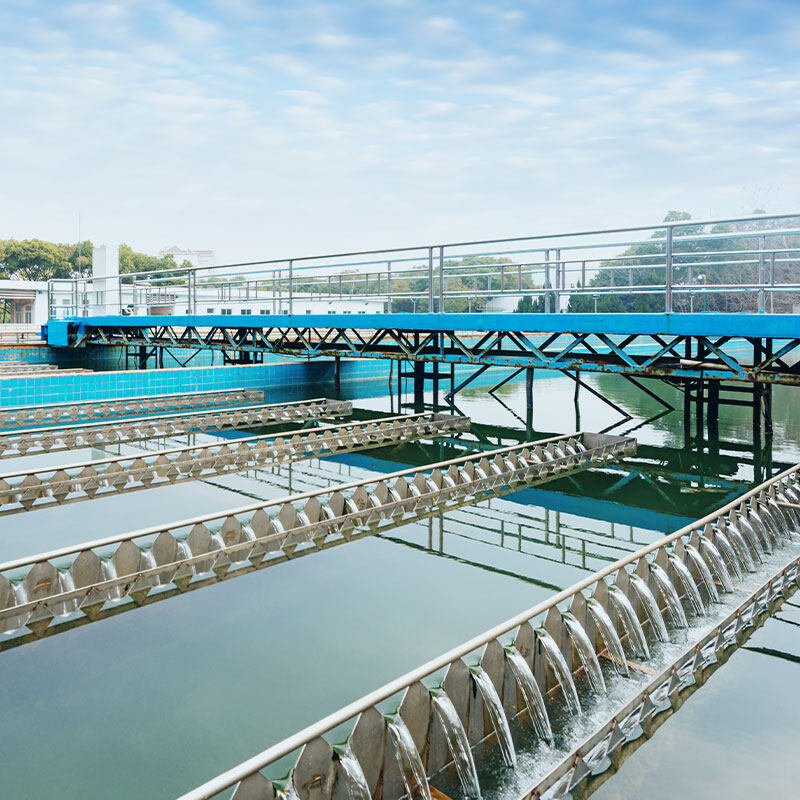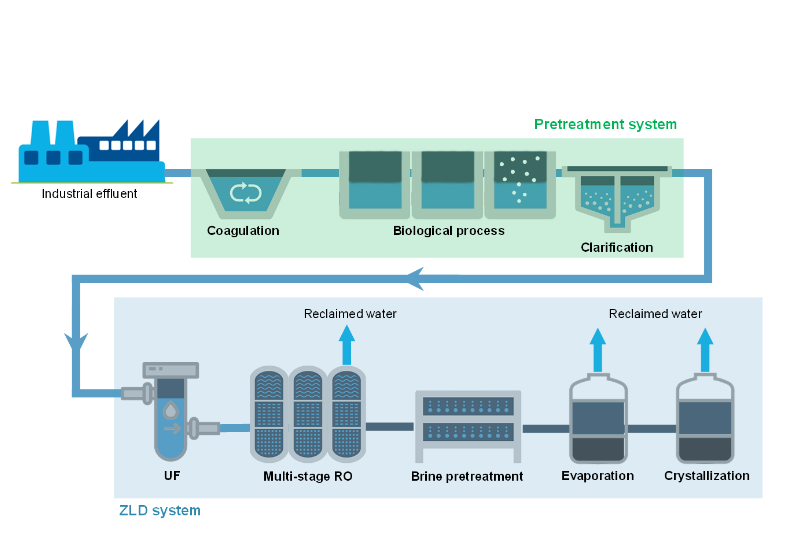Zero Discharge Treatment of High Salt Wastewater 1
Wastewater "zero discharge" refers to the reuse of industrial wastewater, this part of the salts and pollutants in the high concentration of wastewater all (99% or more) recycling and reuse, without any wastewater discharged from the plant. The salts and pollutants in the water are concentrated and crystallized to be discharged as solids from the plant and sent to landfills or recycled as useful chemical raw materials.
Sources of high salt wastewater?
1.Concentrated brine produced in the desalination process
There are two main ways to deal with the high salt wastewater produced by desalination:One is to use the waste recycling to generate economic benefits, to achieve the real "zero discharge".
The other one is to directly discharge high salt wastewater into the sewage system, rivers, lakes or oceans.
2.High-salt wastewater discharged directly from the industrial production process
Generally speaking, the inorganic salts in high-salt wastewater mainly come from production wastewater and domestic sewage (with potassium ions, calcium ions, sodium ions, chloride ions, sulfate ions, etc.), while it contains some organic substances, mainly glycerol and low carbon chain compounds.
3.Industrial production of wastewater recycling and the generation of salt water
Such as iron and steel enterprises, coal chemical industry, petroleum and other industrial industries with a large amount of water discharge, in order to save energy and reduce emissions, in the production process need to recycle most of the water for reuse, in the process of reuse there will be a certain concentration of brine produced.
What are the methods of high salt wastewater treatment?
High-salt wastewater treatment methods mainly include Thermal Method, Membrane Method, Ion Exchange Method, Hydrate Method, Solvent Extraction Method and Freezing Method. Among them, Thermal and Membrane Desalination technologies are the main technologies used in large-scale industrial applications.
Thermal Methods can be mainly divided into multi-stage flash (MSF), multi-effect evaporation (MED) and pressurized vapor distillation (VC).
For the zero-discharge treatment of high-salt wastewater, direct evaporation and crystallization can achieve the purpose of zero-discharge, but it consumes a huge amount of money and energy, and also wastes resources.
Membrane Technology can be used to further concentrate high-salt wastewater into ultra-high-salt wastewater, fresh water can be directly reused, concentrated ultra-high-salt wastewater and then evaporation and crystallization, to achieve zero discharge, which greatly reduces the energy consumption and reasonable use of a part of the water resources. QDEVU Membrane Desalination Technology represented by RO technology, because it does not require a lot of thermal energy, for large, medium and small-scale desalination of salt water are applicable.
Membrane technology for the feed water quality and have certain requirements. Therefore, high salt wastewater must be pre-treated (chemicals softening, filtration, ion exchange, etc.), which can effectively reduce the membrane contamination, the service life of the membrane, the quality of the effluent water are improved.
Visit www.evuchina.com for more informations!




